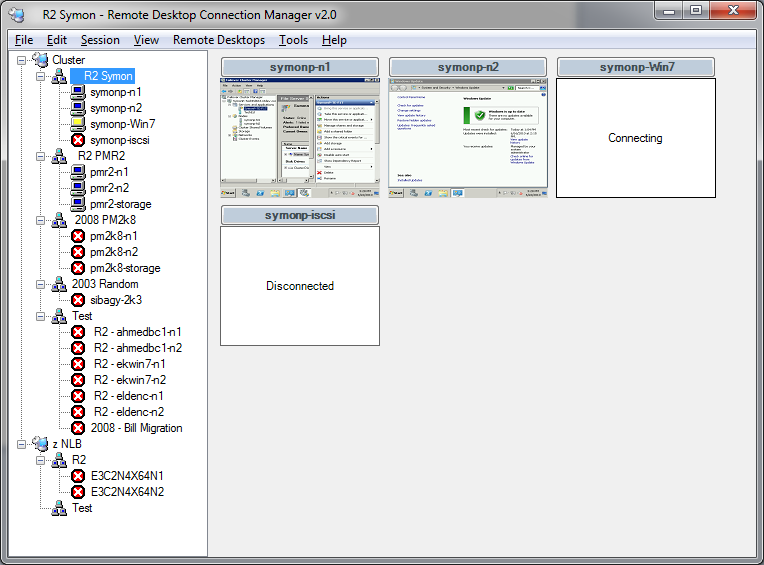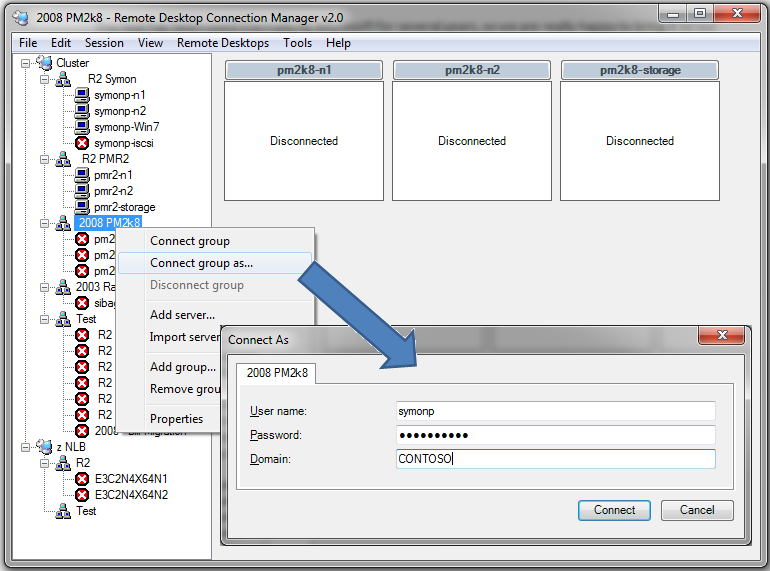Hi Cluster Fans,
We wanted to let you know about a new tool which will significantly help you manage your cluster deployments. Remote Desktop Connection Manager is actually not cluster-specific, but it allows you to logically group server remote desktop connections – ideal if you are working with clusters for easy access to all the nodes within the cluster.
Get it for free here: http://www.microsoft.com/downloads/details.aspx?FamilyID=4603c621-6de7-4ccb-9f51-d53dc7e48047&displaylang=en
This tool has been used internally by Microsoft for several years, so we are happy to bring it to our customers to make their datacenter management experience even easier.
In my environment, I manage several clusters for our team to test and verify customer issues on previously-released versions of Windows Server. I am currently managing a 2003 MSCS Cluster, 2008 SP2 Failover Cluster, 2008 R2 Failover Cluster, my development cluster, as well as a Network Load Balancing (NLB) Cluster. I have also set up easy connections to other team members’ clusters in case I need a ‘backup cluster’ for a demo or want to test a migration between clusters. The screenshot below shows some of the flexibility you have with grouping servers using Remote Desktop Connection Manager:

You also have the ability to connect to or disconnect from an entire group at once:

Another great thing about this tool is that it remembers your permissions when you connect to the nodes, so each subsequent time you connect, you do not need to provide a password, just double-click on the server name you wish to connect to. Additionally this password can be applied to the entire group for an easy log-in experience:

Remote Desktop Connection Manager also gives you the ability to assign each server a ‘friendly name’, which is local to your machine, so you easily ‘rename’ the servers to what is convenient for you. Additionally, you have the ability to save the configuration file, so that you can export it to other management machines or save a backup of your customized layout:

Try it out – it will save you a lot of time with multi-cluster and multi-server configurations.
Get it for free from here:
http://www.microsoft.com/downloads/details.aspx?FamilyID=4603c621-6de7-4ccb-9f51-d53dc7e48047&displaylang=en
Thanks,
Symon Perriman
Program Manager II
Clustering & High-Availability
Microsoft